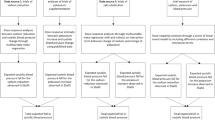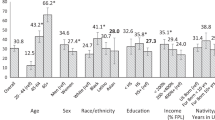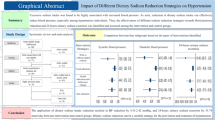Abstract
Diabetes mellitus affects approximately 135 million people in the world. Diabetes and hypertension are both relatively common diseases in westernised countries. Both entities increase with age. Essential hypertension accounts for the majority of hypertension in people with type 2 diabetes, who constitute more than 90% of those with a dual diagnosis of diabetes and hypertension. The benefit conferred per mm Hg blood pressure reduction appears to be greater in persons with type 2 diabetes than in those with hypertension and non-coexistent diabetes mellitus. Similar to a subset of patients with essential hypertension, type 2 diabetic patients manifest dietary NaCl-induced exacerbation of hypertension. Recent guidelines have emphasised that the target blood pressure levels for patients with diabetes should be lower than in other hypertensive groups. An increased total body sodium and enhanced vascular reactivity are found in people with diabetes and most type 2 diabetic patients are salt sensitive. Type 2 diabetes with hypertension is associated with reduced renal plasma flow when dietary salt intake is high. Experimental, observational and interventional evidence support the benefits of sodium restriction in hypertensives. However, the full effects of sodium restriction are usually not obvious for at least 5 weeks. Other favourable effects of moderate reduction in sodium intake are a regress left ventricular hypertrophy, decrease in diuretic-induced potassium wastage, reduction in proteinuria, protection against stroke and from osteoporosis and renal stones, and enhancement of the antihypertensive effect of the antihypertensive agents.
This is a preview of subscription content, access via your institution
Access options
Subscribe to this journal
Receive 12 digital issues and online access to articles
$119.00 per year
only $9.92 per issue
Buy this article
- Purchase on Springer Link
- Instant access to full article PDF
Prices may be subject to local taxes which are calculated during checkout

Similar content being viewed by others
References
Bilo HJG, Gans ROB . Hypertensivepatients and diabetes: a high risk population J Cardiovasc Pharmacol 1998 32 (Suppl 2): S1–S8
The National High Blood Pressure Education Program Working Group. National high blood pressure education program working group report on hypertension in Diabetes Hypertension 1994 23: 145–158
Hypertension in Diabetes Study Group. Hypertension in Diabetes Study (HDS): I. Prevalence of hypertension in newly presenting type 2 diabeticpatients and the association with risk factors for cardiovascular and diabetic complications J Hypertens 1993 11: 309–317
Nørgaard K et al. Nature of elevated blood pressure in normoalbuminuric type I diabeticpatients Essential hypertension? Am J Hypertens 1993 6: 830–836
Kaplan NM . Clinical Hypertension. Seventh edn Williams & Wilkins: Baltimore p 121
De Fronzo RA . The effects of insulin on real sodium metabolism Diabetología 1981 21: 165–171
De Fronzo RA, Ferrannini E . Insulin resistance. A multifaceted syndrome responsible for NIDDM, obesity, hypertension, dyslipidemia, and atherosclerotic cardiovascular disease Diabetes Care 1991 14: 173–194
Resnik LM . Ionic basis of hypertension, insulin resistance, vascular disease and related disorders. The mechanism of “syndrome X” Am J Hypertens 1993 126: 924–929
Tuck M, Corry D, Trujillo A . Salt-sensitive blood pressure and exaggerated vascular reactivity in the hypertension of diabetes mellitus Am J Med 1990 88: 210–216
Draaijer P et al. Salt-sensitive testing inpatients with borderline hypertension: reproducibility and potential mechanisms J Hum Hypertens 1995 9: 263–269
Makrilakis K, Bakris G . Diabetic hypertensivepatients: improving their prognosis J Cardiovasc Pharmacol 1998 31 (Suppl 2): S34–S40
Chen JW et al. Differential glucose tolerance in dipper and nondipper essential hypertension: the implications of circadian blood pressure regulation on glucose tolerance in hypertension Diabetes Care 1998 21: 1743–1748
Oshima T et al. Role of cellular calcium in salt sensitivity ofpatients with essential hypertension Hypertension 1988 11: 703–707
Alexiewicz JM et al. Effect of dietary sodium intake on intracellular calcium in lymphocytes of salt-sensitive hypertensivepatients Am J Hypertens 1992 5: 536–541
Flack JM, Sowers JR . Epidemiologic and clinical aspects of insulin resistance and hyperinsulinemia Am J Med 1991 91 (Suppl IA): 11S–21S
Campese VM . Salt sensitivity in hypertension: renal and cardiovascular implications Hypertension 1994 23: 531–550
Julius S . The evidence for a pathophysiologic significance of the sympathetic overactivity in hypertension Clin Exper Hypertens 1996 18: 305–321
Gupta S et al. Endothelium-dependent inhibition of Na+-K+ ATPase activity in rabbit aorta by hyperglycemia. Possible role of endothelium derived nitric oxide J Clin Invest 1992 90: 727–732
Zatz R, Brenner BM . Diabetic microangiopathy: the hemodynamic view Am J Med 1986 80: 443–451
Correa-Roter R, Hostetter TH, Rosenberg ME . Renin and AGT gene expression in experimental IDDM Kidney Int 1992 41: 796–804
Price DA et al. The state and responsiveness of the renin-angiotensin-aldosterone system inpatients with type II diabetes mellitus Am J Hypertens 1999 12: 348–355
De’ Oliveira JM et al. Autonomy of the renin system in type II diabetes: dietary sodium and renal hemodynamic responses to ACE inhibition Kidney Int 1997 52: 771–777
Dluhy RG et al. Heritable abnormalities of the RAAS in essential hypertension J Cardiovasc Pharmacol 1988 12 (Suppl): 149–154
Hollenberg NK . Genes, hypertension, and intermediate phenotypes Curr Opin Cardiol 1996 11: 457–463
Hollenberg NK, Williams GH . Abnormal renal function. Na-volume homeostasis, and renin system behavior in normal-renin essential hypertension. In: Laragh JH, Brenner BM (eds) Hypertension: Pathophysiology, Diagnosis and Management Raven: New York 1990 1349–1370
Trujillo A, Eggena P, Barret J, Tuck M . Renin regulation in type II diabetes mellitus: influence of dietary sodium Hypertension 1989 13: 200–205
Zatz R et al. Prevention of diabetic glomerulopathy by pharmacological amelioration of glomerular capillary hypertension J Clin Invest 1986 77: 1925
The Sixth report of the Joint National Committee on Prevention, Detection, Evaluation, and Treatment of High Blood Pressure Arch Intern Med 1997 157: 2413–2445
Guidelines Subcommittee 1999 World Health Organization-International Society of Hypertension guidelines for the management of hypertension J Hypertens 1999 17: 151–183
Law MR, Frost CD, Wald NJ . III-analysis of data from trials of salt reduction BMJ 1991 302: 819–824
Intersalt Cooperative Research Group. Intersalt: an international study of electrolyte excretion and blood pressure. Results for 24 hour sodium excretion and blood pressure within and across populations BMJ 1996 312: 1249–1253
Higashi Y et al. Nocturnal decline in blood pressure is attenuated by NaCl loading in salt-sensitivepatients with essential hypertension: noninvasive 24-hour ambulatory blood pressure monitoring Hypertension 1997 30: 163–167
Suzuki M, Kimura Y, Toshima M, Harano Y . Association of insulin resistance with salt sensitivity and nocturnal fall of blood pressure Hypertension 2000 35: 864–868
Kotchen TA, McCarron DA . Dietary electrolytes and blood pressure. A statement for healthcare professionals from the American Heart Association Nutrition Committee Circulation 1998 98: 613–617
Whelton PK et al for TONE Collaborative Research Group. Sodium reduction and weight loss in the treatment of hypertension in older persons: a randomized controlled trial of nonpharmacologic interventions in the Elderly (TONE) JAMA 1998 279: 839–846
Author information
Authors and Affiliations
Corresponding author
Rights and permissions
About this article
Cite this article
Feldstein, C. Salt intake, hypertension and diabetes mellitus. J Hum Hypertens 16 (Suppl 1), S48–S51 (2002). https://doi.org/10.1038/sj.jhh.1001342
Published:
Issue Date:
DOI: https://doi.org/10.1038/sj.jhh.1001342
Keywords
This article is cited by
-
Dietary pattern scores in relation to pre-diabetes regression to normal glycemia or progression to type 2 diabetes: a 9-year follow-up
BMC Endocrine Disorders (2023)
-
Clinical effect of nonsteroidal mineralocorticoid receptor (MR) antagonists in the treatment of diabetic kidney disease: expectations as a new therapeutic strategy
Hypertension Research (2022)
-
Diabetes knowledge and its association with the weight status among residents of Jeddah City, Saudi Arabia
Nutrition & Diabetes (2018)



